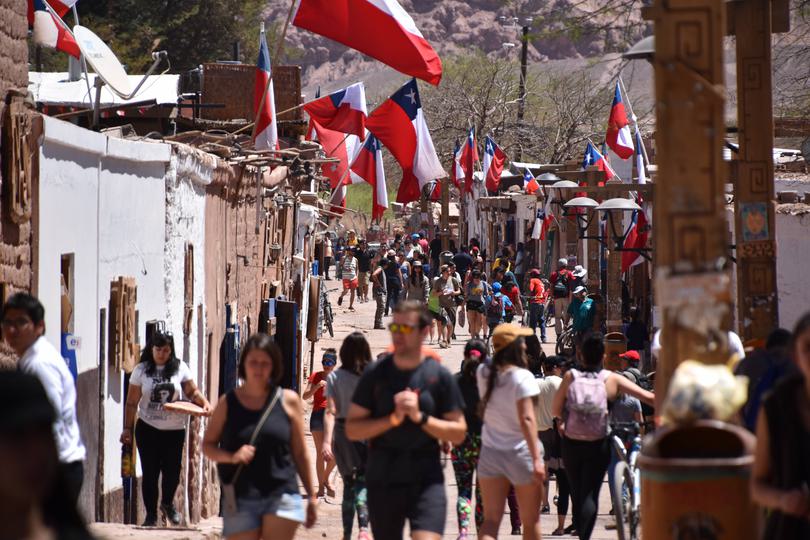
An international team led by researchers from the Oxford Martin Programme on Pandemic Genomics studied how local travel patterns and mobile data from Chile can improve global pandemic responses, highlighting the importance of land-based mobility and targeted strategies.
To better prepare for future pandemics, understanding how transmission dynamics evolve globally is essential. While air travel plays a major role in spreading infectious diseases internationally, local mobility presents unique opportunities for improved local pandemic mitigation policies. New research focused on Chile in the COVID-19 pandemic provides insights into how the virus spread in the region, emphasising the importance of land-based mobility and local movement patterns.
Chile’s robust genomic surveillance program, alongside non-pharmaceutical interventions (NPIs) like neighbourhood-level interventions, provided an opportunity for studying viral transmission at local scales. Regional differences shape local outbreaks, and these local dynamics can influence global transmission patterns.
This new study found that from late 2020, distinct variants emerged and spread in South America, with land border crossings, rather than air travel, highlighted as a major pathway between country spread rather than airline-based passenger movements.
Professor Moritz Kraemer, Director of the Oxford Martin Programme on Pandemic Genomics, said: 'This highlights the significance of land-based mobility, an understudied factor in viral spread.'
The study combined genomic surveillance data from airports and communities with records of land border crossings and incoming flights and anonymised human mobility data from mobile phones, covering 24.3% of Chile’s mobile phone subscribers. This integration allowed researchers to assess how Chile’s mobility network influenced the spread of newly imported variants.
Collaboration across government, academia, and the private sector is critical to ensure privacy and security while harnessing this data to inform public health strategies
Nationally, the strength of connectivity between different neighbourhoods predicted when variants would arrive in new locations. Stricter local interventions were also associated with fewer domestic viral importations. The Chilean restrictions were time-based (restrictions all week or only at weekend) as opposed to the event- or size-based restrictions seen in the UK’s tiered local lockdowns. Chile also implemented these at a much more granular local, rather than regional, scale.
The country also implemented a mobility pass for fully vaccinated individuals, to whom restrictions on mobility and mixing did not apply. The researchers didn’t find the mobility pass affected the viral movements within neighbourhoods, but discovered it almost doubled the numbers of viral movements between neighbourhoods. This could have been driven by changes in behaviour (i.e., people with mobility passes moving between neighbourhoods more often) leading to more viral movements – as even vaccinated individuals could carry and transmit the virus.
The study emphasises the need to incorporate human mobility data — especially from mobile phones — alongside genomic analysis to better predict and control future outbreaks. Most prior research has focused on the global north, where air travel dominates connectivity. This research shows that a more nuanced understanding of local travel and movement patterns, particularly in regions like the global south, is vital to improving pandemic preparedness.
Dr Bernardo Gutierrez, Postdoctoral Research Fellow for the Pandemics Genomics programme and lead author of the paper concluded: 'Formal mechanisms for accessing and using mobility data in emergency situations are essential. Collaboration across government, academia, and the private sector is critical to ensure privacy and security while harnessing this data to inform public health strategies—not only for pandemics but also for other major crises, such as displacements and migration during climate extreme events and economic crises.'